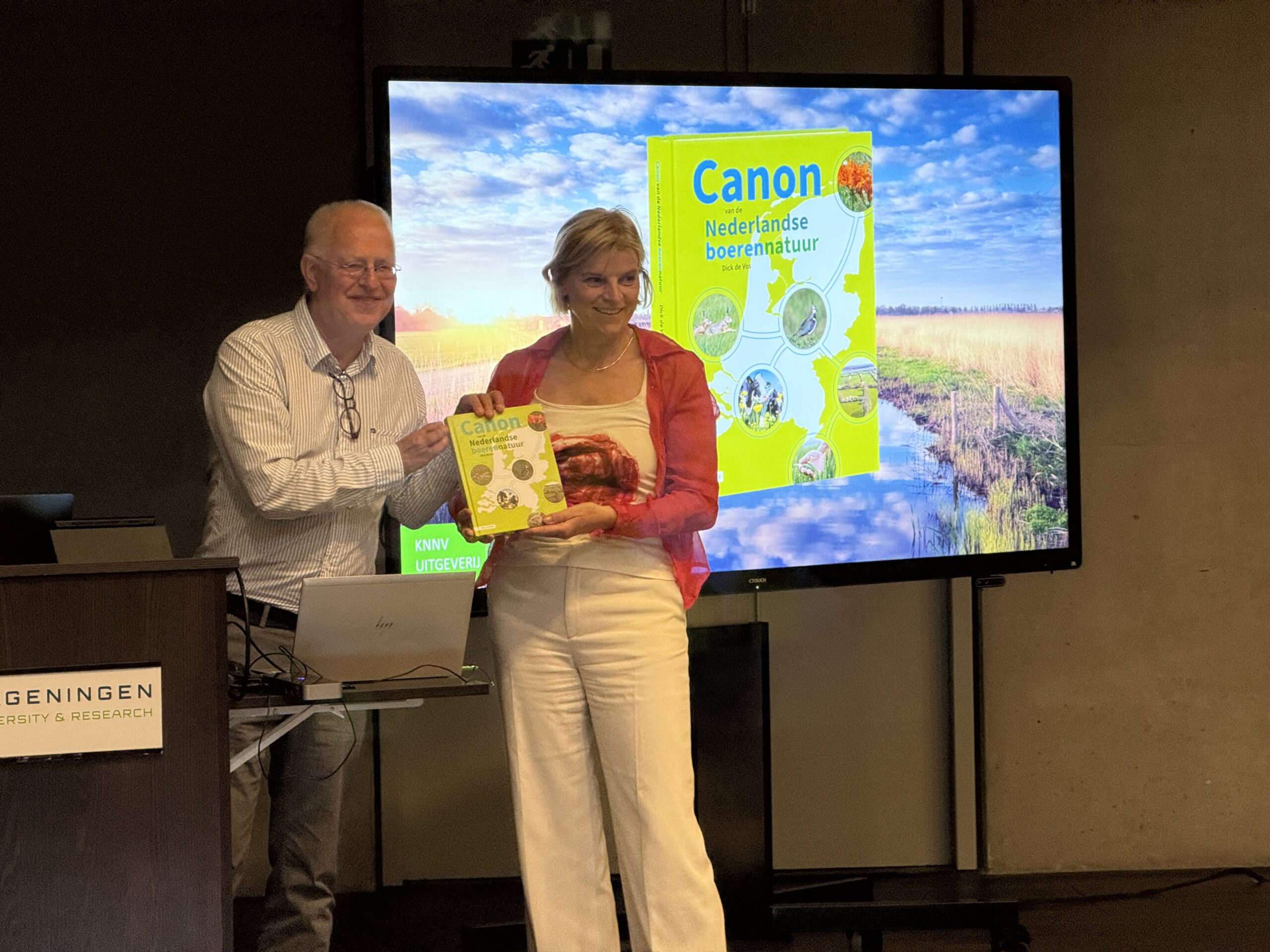Last week, chair of the board Sjoukje Heimovaara was handed the first copy of the Canon of Dutch Farmland Nature in Orion, which describes fifty plant and animal species that are characteristic of the Dutch countryside. The book was produced with substantial input from Wageningen.
‘If it had been up to Liesje [Mommer] and Dirk [van Apeldoorn], this canon would have been a thousand pages thick, said KNNV publisher Nicole van Hoorn at the book presentation. She outlined how she and author Dick de Vos had approached WUR about a year and a half ago for advice on compiling the canon and thus came into contact with Mommer and Van Apeldoorn, who, with their respective roles as professor and researcher, are closely involved in the Wageningen Biodiversity Initiative. ‘When we asked them which plants and animals definitely belonged in the canon and what could be said about them, the species and stories really came flooding in. Their enthusiasm was infectious’, said the publisher.
Mommer and Van Apeldoorn also convinced the editorial team that ‘farmer’s nature’ does indeed exist; that one does not exclude the other, and in fact, that the Netherlands is home to various plant and animal species that find a suitable habitat thanks to agricultural activities. Simply put: no godwits without grassland (although that grassland does need to be a little richer in herbs…) and the Netherlands has many more such culture-following species.
Nature as a partner
The connection between nature and culture is also the theme of the book’s foreword, written by WUR’s emeritus professor of Ecology and Philosophy of Nature Restoration, Matthijs Schouten. ‘We have become accustomed to placing humans and nature in opposition to each other. However, it appears that cooperation is indeed possible that can benefit not only humans but also nature,’ he states. ‘But then we will have to start seeing nature more as a partner.’
The CropMix research programme revolves more or less around nature as a partner. Professor of Entomology Erik Poelman, together with Van Apeldoorn the driving force behind this project, spoke briefly about it during the book presentation. CropMix is studying, for example, whether the ecological processes in crop-diverse cultivation systems can (partly) compensate for pest control.
The project also assesses what strip cropping means for biodiversity (‘We are aiming for far more than fifty species’, joked Poelman). A great result: after just two years, CropMix was able to measure that strip cropping clearly attracts more birds and bird species than full-field (monoculture) cultivation. And that effect can also be noticed close to home, Poelman reported: on the strip cropping trial fields behind the campus, the call of the partridge can once again be heard regularly, the field bird that – indeed – was given a place in the Canon of Dutch Farming Nature.
Translated with DeepL




![[Seriously?] Something fishy about BioBlitz](https://www.resource-online.nl/app/uploads/2025/05/WEB_DeNeusUK.png)